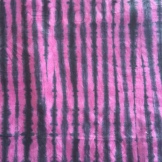
Hey babes,
Y'all must know how much I love Senegalese tie dye... don't you? Here is a little bit of information to start the new year :)
Tie dye, thioup, batik, so many names I use to describe Djeeg'n's hand printed fabrics. Thioup is mostly a west African artistry but it can also be found in Asia.The questions I want to briefly answer here is; What's the process behind all these beautiful textiles? how is it done? Well it is a time consuming hand work but ... the end result is beautiful colorful clothes.
How it is done? Well there are several printing techniques but let me show you, with images, the most commonly used:

Tie and dye method
Block stamping

Stitching pattern

Folding pattern
Screen printing
The best part is, every single dyed piece will remain truly unique as no two ties or stitching patterns can be exactly reproduced the same way. I also love the so-many combination available to the creative mind. I can do a single tie and dye or layer different patterns and colors on top of each other and still have a beautiful result. Thioup is made out of 100% cotton (mostly a brocade for added texture) or sometimes some cotton blends will work.




After the fabrics are printed on, they continue their journey through 1st washing to remove dirt, mixing dies and coloring, pre-drying, removal of stitches and ties, then fabrics are hang to dry, followed by a 2nd washing with water and vinegar, drying again and finally beaten to make it shine.
Voila,
Talk to you soon again babes!
Love, Aïssata



